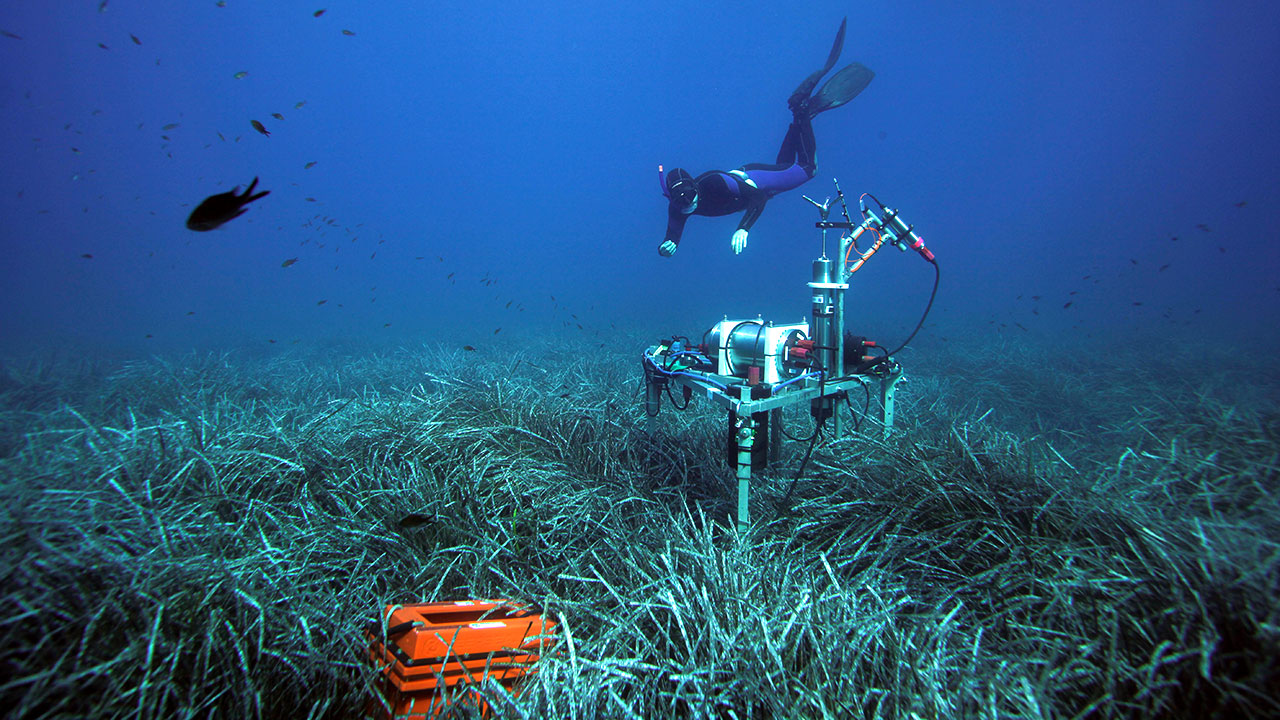Symbiont supplies seagrass with nitrogen
Seagrass is an important store of carbon dioxide. A bacterium enables the plant to thrive.

Growing even though nutrients are scarce - in shallow coastal regions of temperate and tropical seas, seagrass faces precisely this challenge. For most of the year, there is no nitrogen in a form that the aquatic plant can utilize. Only elemental nitrogen is abundant in the sea, but seagrass cannot absorb it. Until now, it was therefore assumed that bacteria in the environment convert this nitrogen and thus provide nutrients for the neighboring plant. Now, however, a research team has been able to show that the relationship between microbes and seagrass is even closer than assumed.
Symbiosis in the seagrass roots
"The bacteria live in the roots of the seagrass," explains Wiebke Mohr from the Max Planck Institute for Marine Microbiology in Bremen. This is the first time such an intimate symbiosis has been shown in seagrass, she said. "Until now, this was only known from land plants, especially in agriculturally important species such as legumes, wheat or sugar cane." These, too, cannot utilize elemental nitrogen, which is abundant in the air. They therefore enter into a symbiotic relationship with bacteria and supply them with other nutrients in exchange for nitrogen.
Seasons influence the symbionts
In the sea, this symbiosis seems to be linked to the seasons: In winter and spring, there is enough usable nitrogen in the sea and sediments. "The symbionts are then present sporadically in the roots of the plants, but probably not very active," Mohr describes. In summer, however, the seagrass competes with more and more algae for the scarce nutrients - and the bacteria spread in the seagrass. This then grows particularly strongly despite the apparent lack of nutrients.
The symbiontic bacteria were previously unknown to science. Mohr and her team have named them Celerinatantimonas neptuna after the Posidonia neptune grass in which the microbes live. Similar bacteria also live in marine algae such as kelp. "When the seaweeds moved from the land to the sea about 100 million years ago, they probably adopted the bacteria from the large algae," Mohr assumes, "They sort of copied the system that was highly successful on land and then, in order to survive in the nutrient-poor seawater, acquired a marine symbiont."
Important for ecosystems and climate
The discovery of this symbiosis is not only relevant for understanding marine ecosystems, which are home to sea turtles, seahorses and manatees and protect coasts from erosion by storm surges. These plants play a role in the carbon cycle and climate: seagrass meadows cover up to 600,000 square kilometers and, as they grow, sequester millions of tons of CO2 each year, which they store for long periods of time, removing it from the atmosphere.
bl


